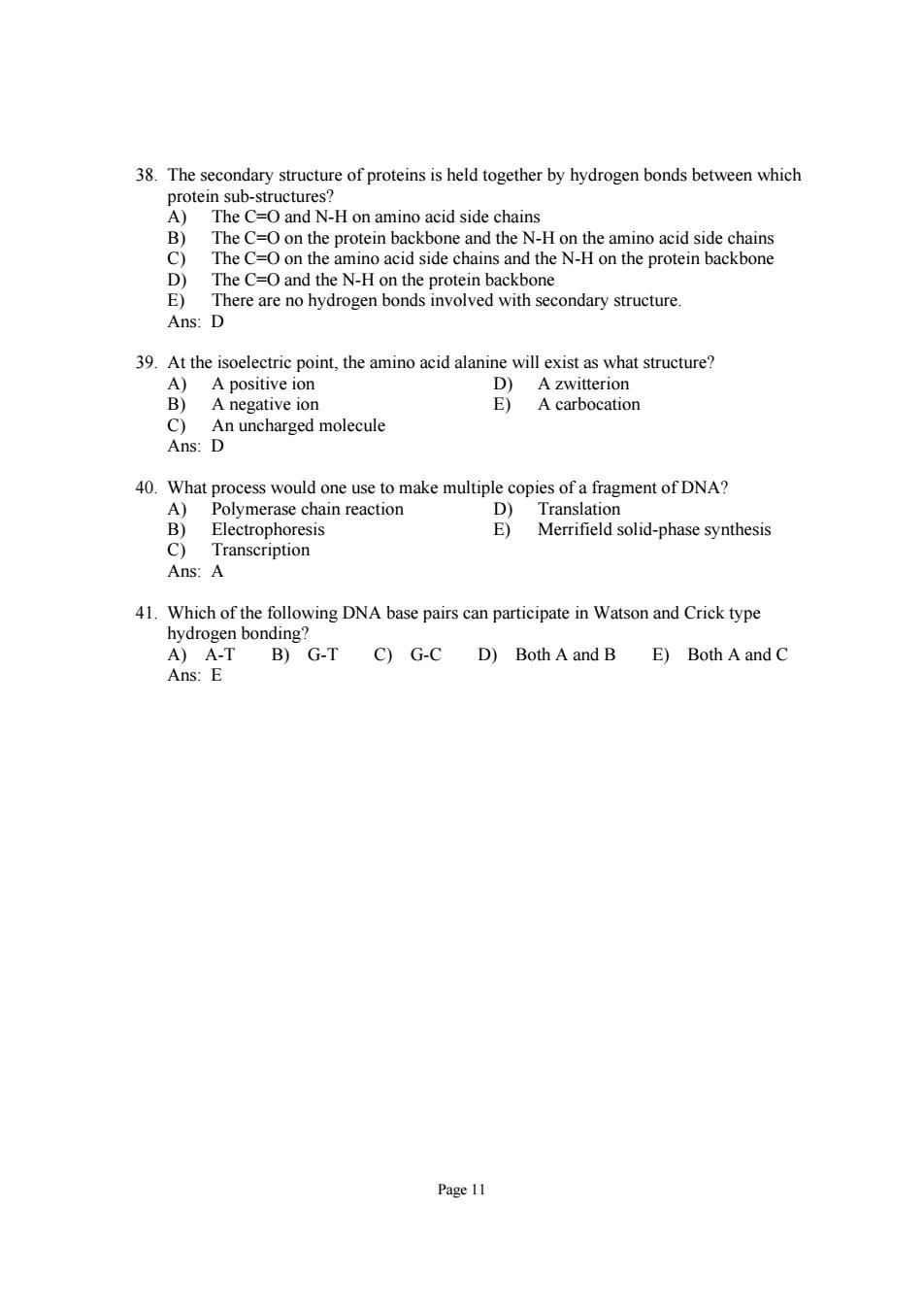正在加载图片...

38.The secondary structure of proteins is held together by hydrogen bonds between which -H on an nnoacidsidtcch N-H o acid side chair The C=o on the acid side chains andtheN-H the prote backbon D) The C=O and the N-H on the protein backbone E)There are no hydrogen bonds involved with secondary structure. Ans:D 39.At the isoelectric point,the amino acid alanine will exist as what structure? ve on An arged molecule Ans:D 40.What process would one use to make multiple copies of a fragment of DNA? A) Polymerase chain reaction D) Translation Electrophoresis E)Merrifield solid-phase synthesis 41.Which of the following DNA base pairs can participate in Watson and Crick type hydrogen bonding? A)A-T B)G-T C)G-C D)Both A and B E)Both A and C Ans:E Page 11Page 11 38. The secondary structure of proteins is held together by hydrogen bonds between which protein sub-structures? A) The C=O and N-H on amino acid side chains B) The C=O on the protein backbone and the N-H on the amino acid side chains C) The C=O on the amino acid side chains and the N-H on the protein backbone D) The C=O and the N-H on the protein backbone E) There are no hydrogen bonds involved with secondary structure. Ans: D 39. At the isoelectric point, the amino acid alanine will exist as what structure? A) A positive ion D) A zwitterion B) A negative ion E) A carbocation C) An uncharged molecule Ans: D 40. What process would one use to make multiple copies of a fragment of DNA? A) Polymerase chain reaction D) Translation B) Electrophoresis E) Merrifield solid-phase synthesis C) Transcription Ans: A 41. Which of the following DNA base pairs can participate in Watson and Crick type hydrogen bonding? A) A-T B) G-T C) G-C D) Both A and B E) Both A and C Ans: E